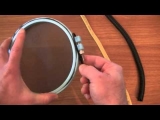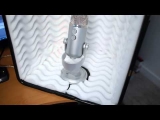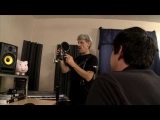Shock Mount
Shock Mount
The word “microphone” was coined by Sir Charles Wheatstone way back in 1827, and his microphone was merely two thin metal rods that resembled a stethoscope. The way it worked was that if you wanted to hear a particular sound, you would place the far end of the rod on the source and put the near ends to your , as Wheatstone demonstrated, sound travels even faster through denser media like metal than it does through air, microphones need to be isolated from vibrations that could move through the floor and travel up the mic stand. To better isolate microphones from these unwanted noises, more sensitive mics, like most condensers, are often supported by a shock-mount. This is a flexible arrangement of elastic bands that hold the mic, so that even if vibrations reach the mic stand, they won’t be transmitted to the mic, since the mic isn’t physically coupled to the stand. Since most dynamic mics have higher-inertia capsules, they’re less sensitive to these extraneous vibrations, and don’t typically require a shock-mount.















